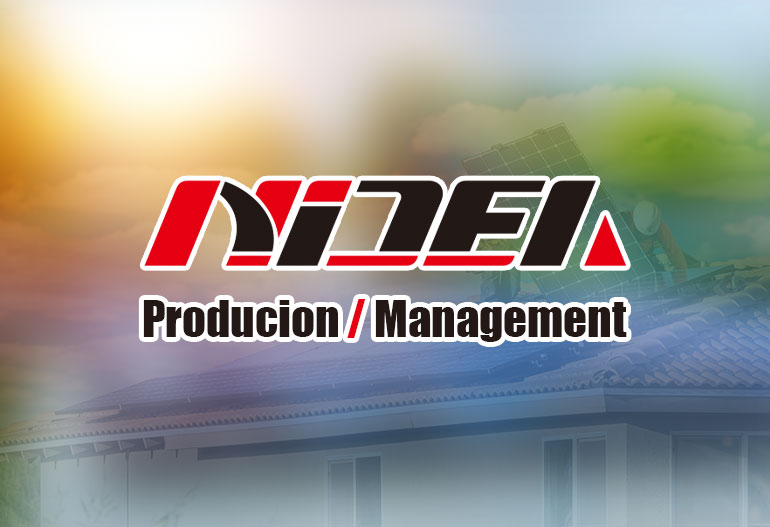
Environmental Requirements and Ventilation Design for High-Frequency UPS Equipment
1. Introduction
2. Key Environmental Requirements for High-Frequency UPS
2.1 Temperature Control
Operating Temperature Range: Most manufacturers specify an operating range of 0°C to 40°C (32°F to 104°F), but optimal performance occurs between 20°C and 25°C (68°F to 77°F). At temperatures above 30°C, efficiency begins to decline: a 10°C increase can reduce efficiency by 1–2%, translating to higher energy losses and additional heat generation.
Temperature Uniformity: Spatial temperature variations within the UPS enclosure or surrounding area must be minimized. Hot spots (e.g., near power semiconductors) can exceed component limits even if the ambient temperature is within range. Maximum allowable temperature gradients across the UPS are typically <5°C per meter.
Temperature Cycling: Rapid temperature fluctuations (e.g., >10°C per hour) cause thermal expansion/contraction of components, stressing solder joints and connectors over time. This is particularly problematic in unconditioned spaces (e.g., outdoor cabinets or industrial warehouses) with diurnal temperature swings.
2.2 Humidity Regulation
Operating Humidity Range: Recommended relative humidity (RH) is 40–60%. Below 30% RH, static electricity becomes a risk: voltages as low as 500V can damage sensitive electronic components (e.g., control boards). Above 70% RH, condensation may form on cold surfaces (e.g., heat sinks or capacitors), leading to short circuits or insulation breakdown.
Dew Point Control: Even within the RH range, dew point must be managed. The dew point should be at least 2°C below the lowest surface temperature of the UPS components to prevent condensation. For example, if the UPS operates in a 25°C environment with 60% RH (dew point ≈16°C), component surfaces must remain above 18°C.
2.3 Air Quality and Contamination Control
Particulate Matter: The air supply must be filtered to remove dust, dirt, and fibers. Typical requirements specify a maximum of 10,000 particles per cubic foot (≥0.5μm), equivalent to ISO 8 cleanliness (per ISO 14644-1). Particles larger than 5μm can block ventilation slots or accumulate on heat sinks, reducing heat dissipation efficiency by 10–30% over time.
Chemical Contaminants: Gaseous pollutants (e.g., sulfur dioxide, hydrogen sulfide, chlorine, ozone) react with metal components (copper, silver) to form conductive oxides or salts, accelerating corrosion. This is critical in industrial environments (e.g., refineries, chemical plants) or coastal areas (salt spray). Acceptable limits are:
Sulfur dioxide (SO₂): <50 ppb
Hydrogen sulfide (H₂S): <10 ppb
Chlorine (Cl₂): <10 ppb
Oil and Vapor: HVAC systems or nearby equipment (e.g., compressors) may introduce oil mist or organic vapors, which coat heat sinks and insulators, reducing thermal conductivity and increasing fire risk.
2.4 Vibration and Shock
Vibration Limits: Operating vibration should not exceed 0.5 g (peak) at frequencies of 10–500 Hz, as per IEC 60068-2-6. Resonant frequencies of UPS components (typically 20–50 Hz) are particularly sensitive; prolonged vibration at these frequencies can fatigue structural parts.
Shock Resistance: The UPS must withstand transient shocks of 10 g (peak) for 11 ms (half-sine wave), per IEC 60068-2-27, to survive events like equipment movement, earthquakes, or nearby machinery impacts.
2.5 Altitude
Altitude Limits: Most high-frequency UPS are rated for operation up to 1,000 meters (3,300 feet) without derating. Above this, cooling efficiency decreases (air density drops ~1% per 100 meters), requiring derating: typically 1% reduction in output power for every 100 meters above 1,000 meters.
Insulation Considerations: Air insulation strength decreases with altitude, increasing the risk of corona discharge in high-voltage sections (e.g., DC busbars). For altitudes >2,000 meters, manufacturers may recommend reinforced insulation or sealed enclosures.
3. Ventilation Design Principles for High-Frequency UPS
3.1 Heat Load Calculation
- Heat Loss Sources: High-frequency UPS generate heat from three primary sources:
Semiconductor Losses: IGBTs and diodes in the rectifier, inverter, and converter stages dissipate 3–5% of input power as heat.
Magnetic Losses: High-frequency transformers and inductors lose 1–2% of power to core (hysteresis) and copper (eddy current) losses.
Auxiliary Losses: Control circuits, fans, and capacitors contribute ~0.5% of additional heat.
Total heat loss is typically 5–8% of the UPS’s rated output power. For example, a 100kVA UPS with 95% efficiency generates 5kW of heat.- Airflow Requirement: The volume of air (in cubic meters per hour, m³/h) needed to remove this heat is calculated using:Q=ρ×cp×ΔTP×3600
Where:For a 5kW heat load with ΔT=10°C, ³ (≈880 CFM). Q = airflow (m³/h)
P = heat load (kW)
ρ = air density (1.2 kg/m³ at sea level)
cp = specific heat of air (1.005 kJ/kg·°C)
ΔT = allowable temperature rise (°C, typically 10–15°C between inlet and outlet)
3.2 Ventilation Methods
- Natural Convection: Suitable for small UPS (<5kVA) with low heat loads. Heat rises through vents in the top of the enclosure, drawing cool air from bottom vents.
Advantages: No moving parts (no fan failure risk), low maintenance.
Disadvantages: Limited cooling capacity; requires vertical space for airflow; ineffective in high-temperature environments.
- Forced Air Cooling: The most common method for medium to large high-frequency UPS (5kVA–1000kVA). Integral fans (axial or centrifugal) push or pull air through the enclosure, directing it over heat-generating components.
Axial Fans: Used for low-pressure, high-flow scenarios (e.g., cooling heat sinks). Mounted on side panels, they move air parallel to the fan axis.
Centrifugal Fans: Better for high-pressure applications (e.g., pushing air through dense component arrays or long ductwork). Air enters axially and exits radially.
Redundancy: Critical systems use N+1 fan redundancy (e.g., 3 fans for a 2-fan requirement) to prevent overheating if one fan fails.
- Liquid Cooling: Emerging for very high-power UPS (>1000kVA) or space-constrained environments. A liquid (water or dielectric fluid) circulates through cold plates attached to heat-generating components (IGBTs, transformers), transferring heat to a remote radiator.
Advantages: Higher cooling efficiency (liquid has 25x higher thermal conductivity than air); reduces noise (no large fans).
Disadvantages: Higher cost; risk of leaks; requires additional infrastructure (pumps, radiators).
3.3 Airflow Path Design
- Front-to-Back Airflow: Most rack-mounted high-frequency UPS use this design: cool air enters the front (lowest temperature zone), passes over components, and exits hot air at the back. This aligns with data center hot-aisle/cold-aisle layouts, where cold air is supplied to front-facing equipment and hot air is exhausted to a return plenum.
- Bottom-to-Top Airflow: Common in floor-standing UPS. Cool air is drawn from the bottom (near the floor, where air is coolest), flows upward through internal components, and exits through top vents. This leverages natural convection to enhance cooling.
- Avoiding Recirculation: Hot exhaust air must not mix with incoming cool air, as this increases inlet temperature and reduces cooling efficiency. Design strategies include:
Separating inlet and outlet vents by at least 1 meter vertically or horizontally.
Using baffles or ductwork to direct exhaust air to return plenums.
Ensuring positive pressure in cold zones to prevent hot air infiltration.
- Component-Specific Cooling: Critical heat sources (IGBT modules, transformers) require targeted airflow:
Heat sinks with fins aligned parallel to airflow to minimize pressure drop.
Fan placement directly adjacent to high-loss components (e.g., inverter stages).
Thermal interface materials (TIMs) like phase-change compounds or thermal grease to improve heat transfer from components to heat sinks.
3.4 Integration with Facility HVAC
Load Matching: The HVAC system must supply sufficient cool air to meet the UPS’s airflow requirements (calculated in Section 3.1). For example, a data center with 1MW of high-frequency UPS (generating 50kW of heat) requires an HVAC system capable of removing 50kW + additional heat from servers.
Temperature Setpoints: Facility HVAC should maintain ambient temperature at 20–25°C, with ±2°C tolerance. This balances UPS efficiency and HVAC energy consumption.
Air Filtration: HVAC filters must match the UPS’s air quality requirements (ISO 8). Pre-filters (G4) remove large particles, while HEPA filters (H13) may be added in high-contamination environments (e.g., industrial facilities).
Redundancy: HVAC systems serving critical UPS should have N+1 redundancy (e.g., backup chillers, generators) to ensure cooling during power outages—ironically, the same protection the UPS provides for other equipment.
4. Installation and Maintenance Best Practices
4.1 Installation Guidelines
Clearance Requirements: Maintain minimum distances around the UPS to ensure unobstructed airflow:
Front/back: ≥600mm (24 inches) for rack-mounted units; ≥1000mm (39 inches) for floor-standing units.
Sides: ≥300mm (12 inches) to prevent heat buildup in adjacent equipment.
Orientation: Align UPS with facility airflow patterns (e.g., front-to-back units in cold aisles). Avoid placing near heat sources (e.g., server racks, heaters) or direct sunlight.
Mounting: Floor-standing UPS should be placed on level surfaces to prevent vibration-induced stress. Rack-mounted units require secure rails to withstand fan vibration.
Cable Management: Route power and data cables away from airflow paths to avoid blocking vents. Use cable trays above or below the UPS, not in front/back.
4.2 Maintenance Protocols
Filter Inspection/Cleaning: Check air filters monthly; clean or replace when visibly dirty (typically every 3–6 months). Clogged filters increase pressure drop, reducing airflow by 20–50% and raising internal temperatures.
Fan Testing: Verify fan operation weekly (audibly or via UPS monitoring systems). Test redundancy by temporarily disabling one fan (during maintenance windows) to ensure others compensate. Replace fans every 5–7 years (before bearing failure).
Heat Sink Inspection: Annually inspect heat sinks for dust accumulation. Use compressed air (low pressure, <50 psi) or vacuum cleaners with soft brushes to remove debris—never use water or solvents.
Temperature Monitoring: Install sensors at inlet, outlet, and near critical components (e.g., IGBTs) to track trends. Set alarms for temperatures exceeding 30°C (ambient) or 120°C (component junction).
Environmental Audits: Quarterly checks of humidity, particulate levels, and chemical contaminants (using handheld monitors or lab analysis) to ensure compliance with requirements.
5. Case Study: Ventilation Design for a 500kVA High-Frequency UPS Bank
High ambient temperatures (up to 32°C in summer).
Humidity (average 80% RH during monsoons).
Space constraints (limited clearance around UPS).
HVAC system upgraded to maintain 22±1°C and 50±5% RH, with dew point monitoring to prevent condensation.
HEPA filters (ISO 8) installed in air intake ducts to reduce particulate contamination.
Chemical adsorption filters added to remove sulfur dioxide (common in urban Singapore).
Each 500kVA UPS generates 25kW of heat, requiring 12,440 m³/h total airflow (calculated via the formula in Section 3.1).
Forced air cooling with N+1 redundancy (4 fans per UPS, 3 active). Axial fans (120mm) with variable speed control (adjust based on temperature).
Front-to-back airflow aligned with data center cold-aisle/hot-aisle layout: cold air (22°C) from underfloor plenums enters front vents; hot air (32°C) exits to ceiling return plenums.
Clearance: 800mm front/back, 500mm sides to prevent recirculation.
After 2 years, UPS internal temperatures remained <40°C (ambient 22°C).
Component failure rate: 0.1 failures per year (below industry average of 0.3).
Efficiency maintained at 96.5% (no degradation due to heat).
6. Conclusion
Temperature control (20–25°C) is paramount to prevent component degradation.
Airflow must be tailored to the UPS’s heat load, with redundancy to avoid single points of failure.
Integration with facility HVAC and regular maintenance are essential for long-term reliability.
